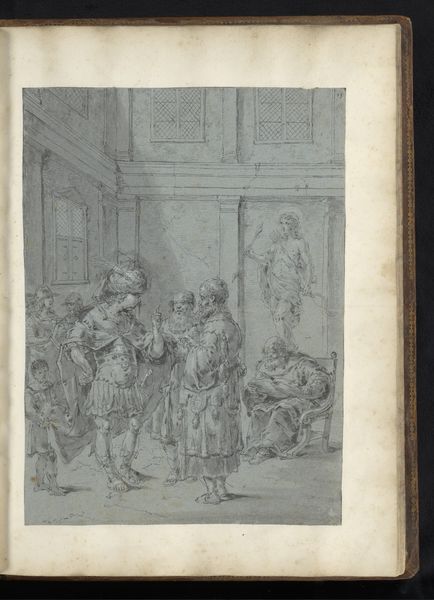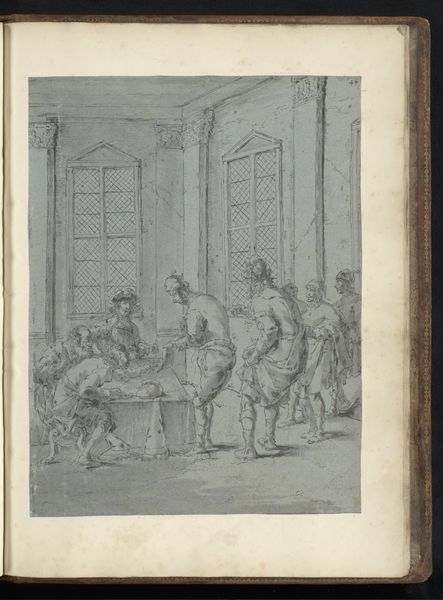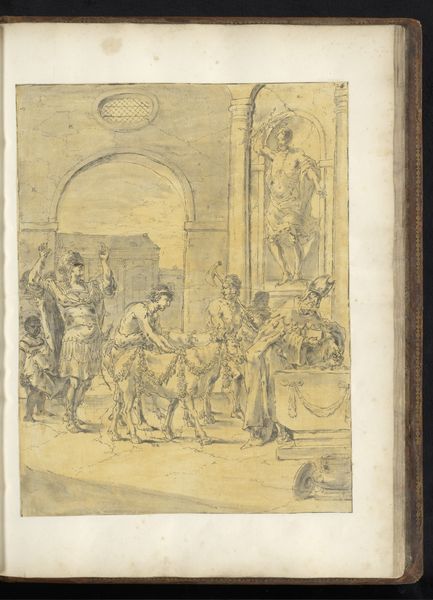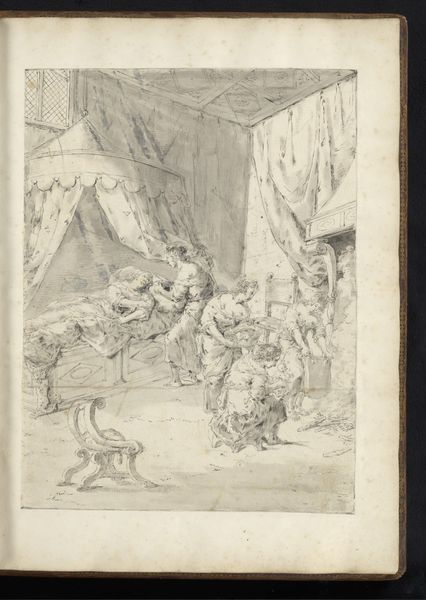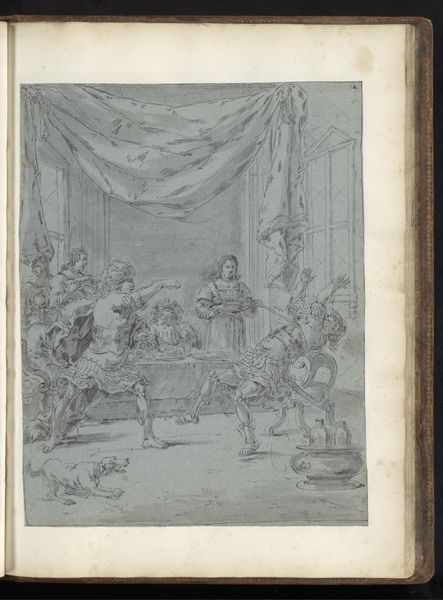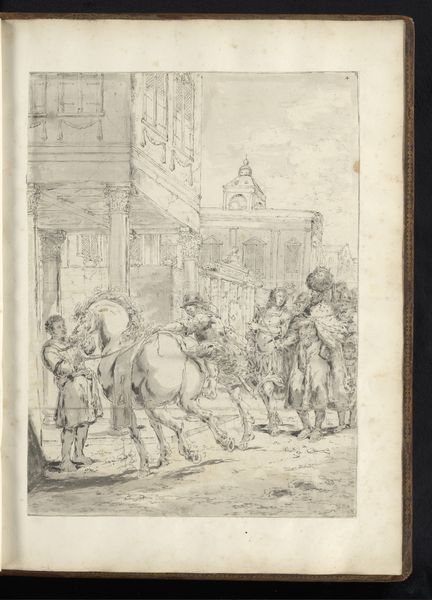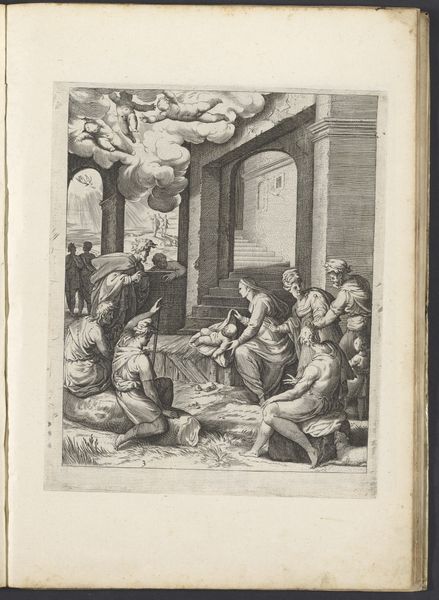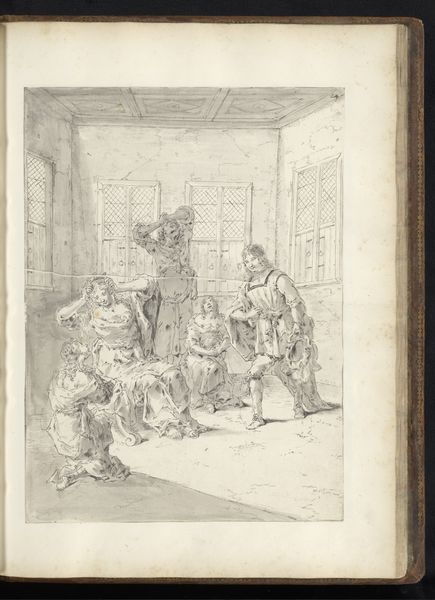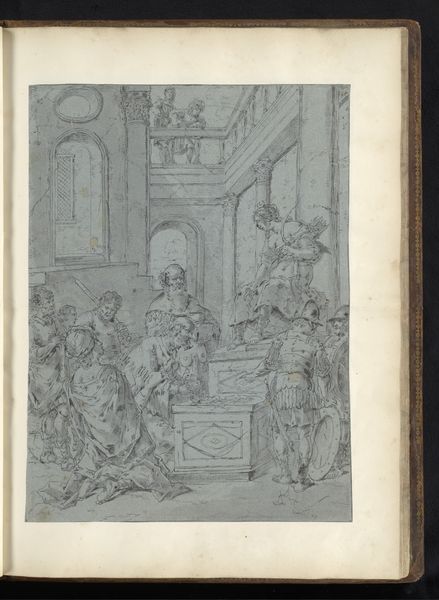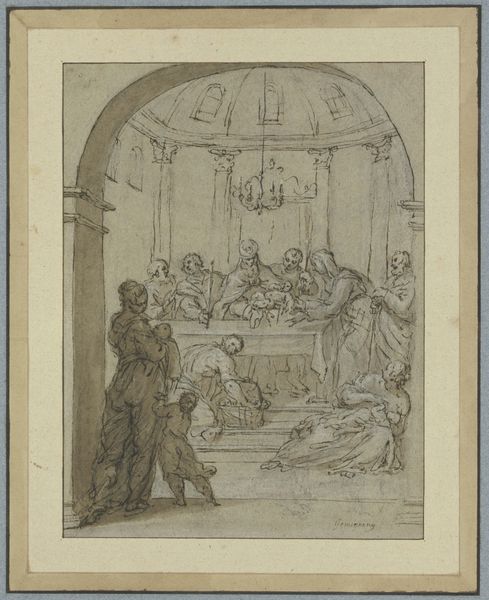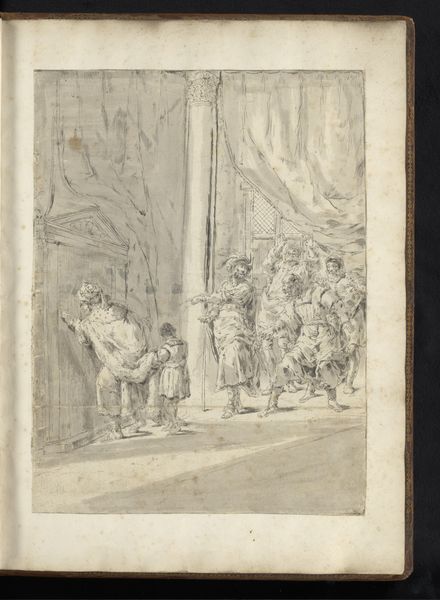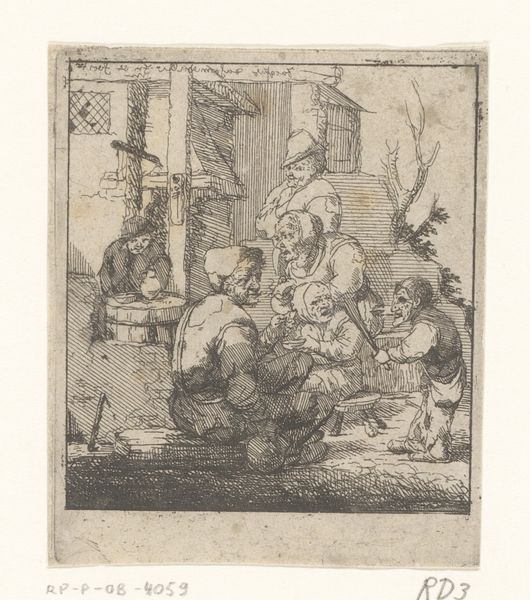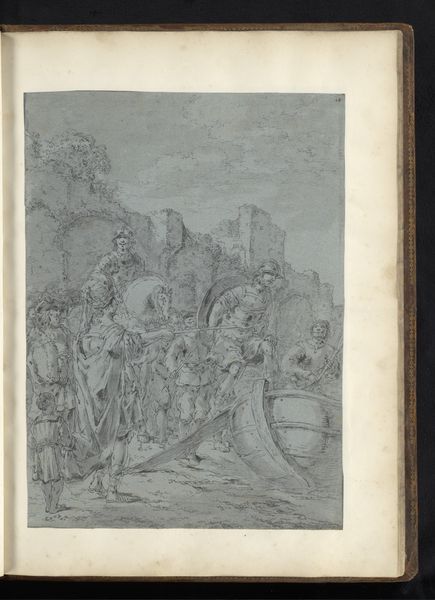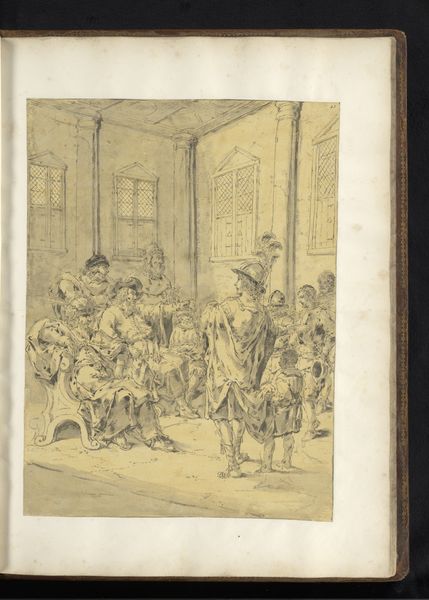
drawing, paper, graphite
#
drawing
#
narrative-art
#
baroque
#
ink painting
#
figuration
#
paper
#
line
#
graphite
#
genre-painting
#
history-painting
Dimensions: height 414 mm, width 311 mm
Copyright: Rijks Museum: Open Domain
Editor: This is a drawing called “Death of Alexander the Great” by Leonaert Bramer, made around 1655 to 1665 using graphite, pen and ink on paper. It's such a flurry of motion depicted with monochrome lines. What stands out to you about it? Curator: Immediately, the public reception of historical narratives comes to mind. Bramer presents a theatrical Alexander, dying surrounded by concerned figures, and it reminds us how historical figures are constantly being reimagined. What does Alexander's death *mean* in the mid-17th century, and how is Bramer shaping that meaning? Editor: A reimagining of a powerful, long-gone figure... How might the political climate have influenced the portrayal? Curator: Precisely. The Baroque period, rife with courtly drama and power struggles, found parallels in Alexander's life and death. Bramer’s crowded composition, full of expressive gestures, taps into the emotional intensity that rulers at the time cultivated around themselves. Note how his composition, for instance, stages this intimate event almost like a public spectacle. Do you see how that reflects a desire for the monarchy to control even death narratives? Editor: It’s a striking observation! There’s that contrast again—a private moment made public. It almost feels like propaganda, subtly shaping how the public perceives power and legacy. Curator: Exactly! It provokes questions about the role of art as a tool for projecting power. And beyond courtly contexts, we must also consider how such representations reflect the Dutch Republic's own political ambitions at the time. These seemingly "historical" scenes really were being made for contemporaries. Editor: I never considered how the present political desires are baked into historical renderings of that time. That has really changed my perspective. Curator: Mine, too. The intersection of art, power, and public perception keeps things endlessly fascinating!
Comments
No comments
Be the first to comment and join the conversation on the ultimate creative platform.
